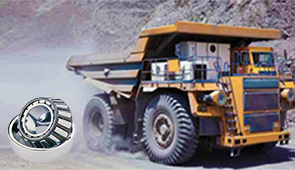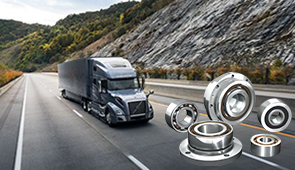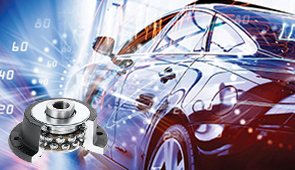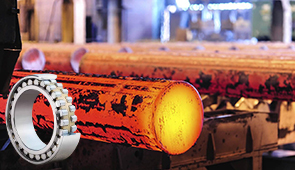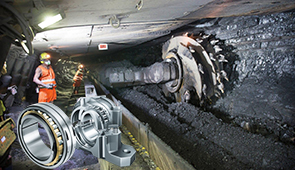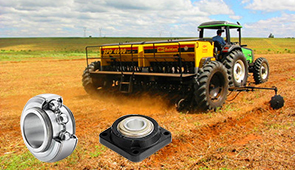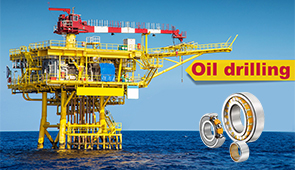The Ultimate Guide to Rod End Bearings: Everything You Need to Know
Rod end bearings, also known as heim joints or rose joints, are pivotal components used across a wide variety of mechanical and industrial applications. These highly versatile mechanical articulations facilitate controlled movement, transfer loads, and ensure precision alignment within systems. Whether you are working in the aerospace, automotive, manufacturing, or agricultural sectors, understanding the functionality, construction, and applications of rod end bearings is crucial for optimal system performance. This guide aims to provide an in-depth overview of rod end bearings, covering their design, types, materials, performance factors, and real-world applications. By the end of this article, you will have a comprehensive understanding of how to select, maintain, and utilize rod end bearings to enhance efficiency and reliability in your specific operations.
What Are Rod End Bearings and Rod Ends?
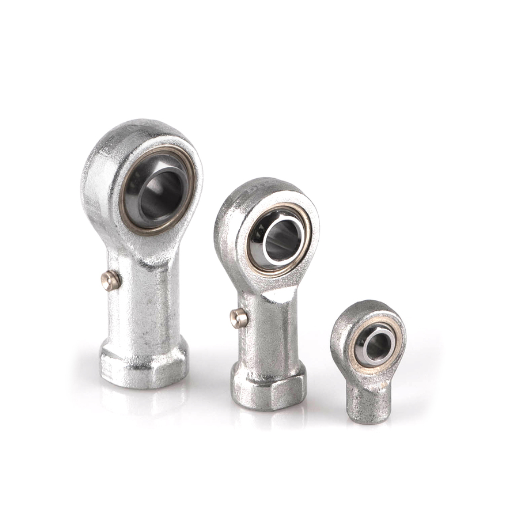
Understanding the Design and Functionality of Rod End Bearings
Rod end bearings, commonly referred to as heim joints or rose joints, are mechanical connecting pieces with a spherical bearing set within a housing. Their main construction comes with a ball swivel mounted in the inner and outer rings enabling the ball to rotate or the angular positions to be altered in a mechanical structure, or system. This makes them adaptable for a range of uses that require efficient motion and load control which is critical in precision engineering tasks and industries.
- Inner Diameter (ID): Refers to the size of the hole in the bearing designed to accommodate the shaft and ranges from 5mm and above to 30mm or more for certain industrial purposes.
- Dynamic Load Capacity: Refers to the highest load a bearing can withstand during constant turning motion, which is determined in kilonewtons (kN).
- Static Load Capacity: Displays the load a bearing can withstand when stationary without moving and not getting deformed permanently, and also in kN.
- Material Composition: Typical materials are carbon, stainless, and bronze for the housing and the ball. This material is selected metallurgically based on its resistance to corrosion, durability, and the environment of operations for the purpose.
- Lubrication Requirements: For some applications, certain rod end bearings have a self-lubricating PTFE liner while others require periodic application of grease or oil.
These design features work together for rod end bearings to effectively reduce friction, accommodate misalignment, and remain operationally intact during dynamic loading. The selection of these features should depend on specific issues of the application such as magnitude of load, rotational speed, temperature, and overall geometric limitations.
Applications of Rod End Bearings in Industry
Due to their effectiveness and versatility, rod end bearings are employed within different industries. These include aerospace, automotive, industrial automation, as well as heavy machinery. An example of rod end bearing application in the aerospace industry is the flight control system, where rod end bearings facilitate motion transfer under high vibrational conditions and extreme temperature variations. In the automotive industry, they are used in steering linkages and suspension systems where their capability of bearing dynamic loads and misalignment keeps the vehicle operating safely and reliably.
- Load Capacity: Choose a bearing that has a static radial load capacity greater than the expected maximum load in the system.
- Rotational Speed: Ensure that the angular velocity meets the requirement but does not exceed the design limits to avoid wear and failure caused by overspeeding.
- Temperature Range: Be certain that the bearing material and lubrication can withstand the operational temperature, especially in engine or industrial kiln applications.
- Misalignment Compensation: Utilize self-lubricating or spherical bearing types depending on the degree of angular misalignment that may be encountered.
- Lubrication: Depending on the operational preferences, self-lubricating bearings for maintenance free applications or grease/oil based ones require selective periods.
These factors facilitate accurate choice and maximum performance concerning the defined application boundaries.
How to Choose the Right Rod End Bearing for Your Application?
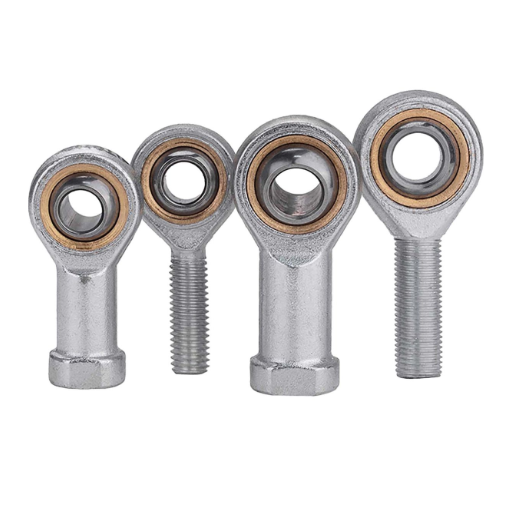
Understanding Metric vs. Inch Series
Choosing between a metric and an inch series rod-end bearing involves regional consideration as well as application needs.
- Dimensional Averages: Within the metric system, the bearing is described by nominal diameters, for example, 10mm, 12mm, or 25mm, whereas an inch series would have fractions like 1/2”, 3/4”, or 1”.
- Load Limitations: Despite meeting all load ratings, standardized static and dynamic loads must always accommodate application requirements.
- Differences in Pitch Theis: An inch series uses Unified Thread Standard (for example, 3/8-24 UNF) while metric is defined within ISO metrics (e.g. M10 x 1.25).
- Tolerance Levels: IT grades are more common to be paired with a description of a metric bearing, while class system describing tolerances is more characteristic to an inch series.
Fundamental to all cost effective designs is the decision of choosing either metric or inch series. This choice should be in accordance to where the production plant is located, what components standards already exist in the assembly, and how they affect the companion hardware.
How Standard and Custom Designs Provide Solutions
It is important to analyze the advantages of each bespoke and off-the-shelf design in solving a specific application problem considering both standard and custom designs. These primary designs have a competitive advantage that includes compatibility, cost, and easy access that standard designs offer. In the case of bearings, the use of ISO standard components ensures that a defined rigid industrial structure of guaranteed dimensions and tolerances like shaft diameters or load ratings such as bearing ID and OD is used.
Bespoke designs have increased efficiency in situations where a specific operational need or a constraint has to be met. For example, a specialized custom bearing made from a durable corrosion resistant high temperature coating material. Also, changes in internal geometry may improve load distribution under certain conditions where the load must be applied.
- Dimensional Tolerance: Standard design is almost always at ISO/ANSI tolerances of ±0.002 mm; custom designs could theoretically go as tight as ±0.001 mm, but would only do so based on justification for operational needs.
- Load Rating: A standard bearing could be made with pre-defined load ratings (for example 150-200 kN for dynamic loads), but does not generally anticipate any custom adaptations or higher irregular and unsymmetrical load capacities for advanced designs.
- Material Composition: Standard options might utilize typical 52100 chrome steel or stainless steel, but custom ones could use hybrid ceramic materials which have much lower wear and friction.
- Operating Environment: The custom designs incorporate the application of certain advanced seals or coatings that aid in protection from chemicals or extreme temperatures ranging from -40°F to 500°F.
This approach assures efficacy and economy in accomplishing operational objectives.
Installation and Maintenance of Rod End Bearings
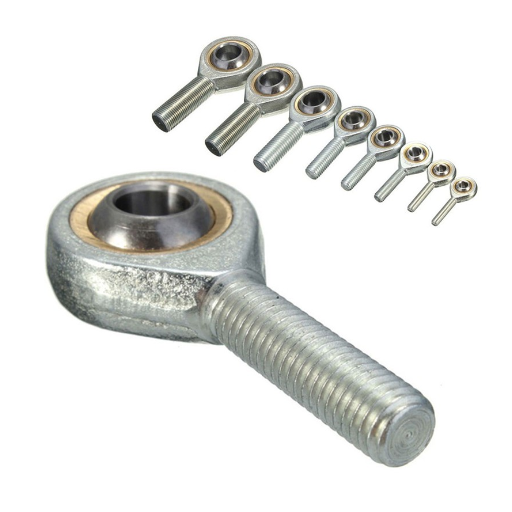
Common Errors and How to Avoid Them
As with other mechanical components, the appropriate care should be taken when using rod end bearings to ensure their effective function and lifespan. One common error that stands out is the rod end type selection which is improper for the given environment or application. To mitigate this, I make sure that the selected bearing corresponds with the load, angle of operation, and surrounding environment. For example, if an application calls for high axial load, I make sure that the heavy-duty type is indeed used.
Another such error is improper lubrication. A bearing that is not lubricated well enough is bound to face problems with excessive wearing and a shortened life span. As part of my approach to solving this problem, I stick to the lubrication guidelines of the manufacturer, making sure to use grease-based lubricants under heavy load conditions and self-lubricating options in low-maintenance settings.
Not inspecting the bearing regularly can lead to unnoticed damaging effects over some time which contributes towards failure. I set a routine inspection schedule designed to check for corrosion, looseness, and other signs of wear, making sure to remove damaged bearings as they are found.
- Operating Angle: Establish the bounding value of the angle of misalignment permissible before bearing failure occurs.
- Static Load Capacity: Verify the manufacturer’s stated static head and dynamic load ratings.
- Torque Requirements: Employ a verified instrument to fasten the rod end to the required torque setting.
- Lubrication Type: Determine a suitable lubricant for the expected operating temperature and environmental conditions of the application.
By considering these factors in an orderly fashion, I guarantee dependable service and durability of rod end bearings in any application.
Tips for Maintenance-Free Rod Ends
Eliminating the need for regular lubrication or servicing, maintenance-free rod ends are constructed to provide dependable performance for long periods. The following technical recommendations should be followed to make sure everything operates smoothly:
- Choose The Right Material Combination: Maintenance-free rod ends generally employ PTFE liners, self-lubricating polymer inserts, or certain hardened metal-on-metal pairs.
- Confirm Load And Misalignment Values: Check that the rod end bearing will support both the mechanical load and the most extreme misalignment angles, typically something like ±3° to ±15°.
- Consider The Operating Environment: Make sure that if the rod end is used in a moisture rich or chemically aggressive location, that it is temperature compatible (-30°C to +250°C typical for PTFE-lined types) and corrosion resistant. Use protective coatings like zinc or cadmium plating for extra security.
- Follow Manufacturer Instructions For Installation: To eliminate the possibility of preloading and misalignment, ensure that exact torque values for housing and shaft interfaces are followed.
- Look for signs of wear: Even though these bearings are maintenance-free, checking periodically for potential liner wear should be done to help enhance the service life. Any rod ends exhibiting significant play or structural integrity failure need to be replaced.
When these principles are incorporated in conjunction with careful application of the relevant technical specifications, maintenance-free rod ends can be operated in a cost-effective manner without compromising on durability.
What Are the Different Types of Rod End Bearings?
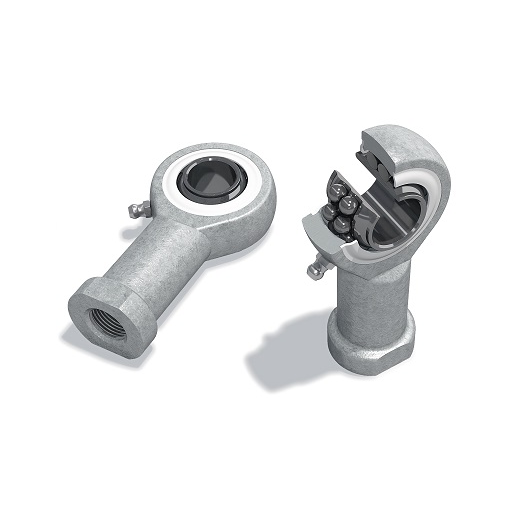
Exploring Female vs. Male Thread Options
When it comes to choosing between a male or female threaded rod end bearing, mounting procedure and load application determine the preferred option. Female ends with internal threads are preferable in cases where the bearing is to be attached to a threaded rod. Male ends with external threads are easier to attach directly to a part, like a machine element that has a threaded bore.
- Thread Specifications: Your assembly parts should be compatible with metric or inch series threads. Calculate tolerances of the threads which will most probably be 6g/6H for metric or class two for imperial screws
- Load Capacity: Both radial static and dynamic loads must be defined. The female ends usually have lower load ratings which stems from their encased construction.
- Material Compatibility: Depending on the environment such as corrosive or high temperature, use carbon or stainless steels, or their alloys to make the rod ends.
From a precise evaluation of all these factors, I will be able to match the type of threads with your defined mechanical and structural requirements to offer maximum efficiency.
Understanding Spherical and Plain Bearing Variants
When it comes to choosing between types of spherical bearings or plain bearings, I start with an analysis of their unique features and how they correspond with my requirements. Spherical bearings are preferred when the application demands some degree of rotation and angular misalignment, for instance, in heavy machinery like bulldozers, automotive suspensions, or aerospace linkages. They can run smoothly even at high radial and axial loads due to the steel, PTFE, or bronze used in their construction.
Conversely, plain bearings work best under simple load conditions where either sliding or rotating motion occurs around a single axis. They are most frequently used on industrial and agricultural equipment. These are preferred for practices that involve moderate load and speed and are mostly made out of bronze, graphite, or composite polymers which provide better wear resistance and self-lubrication.
- Load Rating: Check that the bearing can support the operational loads without deforming or breaking parts.
- Angular Misalignment Capability: Essential for spherical types, most people will have measured these in degrees, for example, ±3° is a standard for some varieties.
- Material Composition: Has impact on strength, durability, and lubrication requirements, for example, steel/PTFE offers self-lubrication and high wear resistance.
- Operating Temperature Range: Should be compatible with the environment, composite plain bearings, for instance, can handle up to 250°F (121°C).
All in all, I estimate these factors to the bearing’s performance characteristics about my specific needs. This functional analysis guarantees the best performance, durability, and dependability of the system.
The Role of Spherical Bearings and Ball Joints in Rod Ends
Spherical bearings and ball joints play a crucial role in the design and functionality of rod ends by enabling rotational and angular misalignment accommodation under varying load conditions. These components provide a pivot point for connecting moving parts, ensuring smooth operation even when subjected to axial, radial, or combined loads. For example, spherical bearings are ideal for applications requiring low-friction articulation while maintaining load transfer efficiency.
- Load Capacity: Evaluate the maximum static and dynamic load requirements based on operating conditions, ensuring the chosen component can withstand these forces safely.
- Angular Misalignment: Confirm the spherical bearing or joint’s angular misalignment tolerance by consulting engineering specifications, typically measured in degrees of articulation.
- Material Selection: Choose materials based on operating environments. For instance, high-strength steel or corrosion-resistant alloys may be required for harsh conditions.
- Maintenance Requirements: Incorporate lubrication considerations, as some designs may require self-lubricating liners for reduced maintenance.
- Operating Temperature Range: Verifying a suitable temperature range (e.g., -65°F to 250°F or beyond) ensures material integrity during use.
By systematically addressing these points, I ensure optimal suitability of the spherical bearing or ball joint in my rod end application, supported by clear, justifiable technical requirements.
Why Are Rod End Bearings Crucial in Large-Scale Applications?
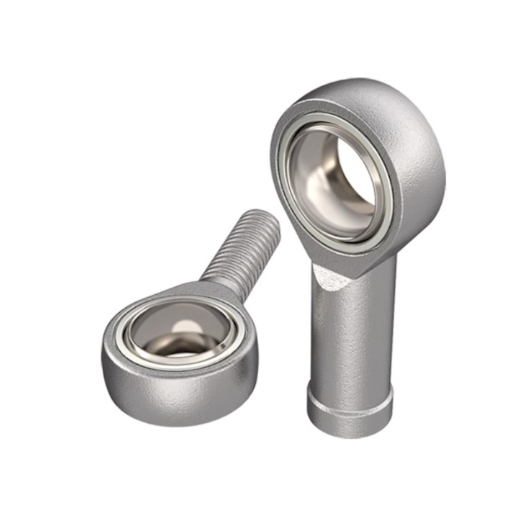
The Advantages of Self-Lubricating and Maintenance-Free Rod End Bearings
These bearings have no requirements for standard lubrication due to PTFE liners or composite layers which reduces maintenance work and expenses. This feature holds great importance where services are periodic or contrived such as in heavy machinery or far-flung installations.
PTFE composite bearings, rotations lower than 20% in elliptical oscillating. are generally competent with extenuated wear and decaying. They also show relatively good responses with hoisted relative overriding compression and smoothly enduring broad other signals between minus 200 and 260 degrees. These parts are further corrosion which guarantees reliability in dreary working conditions: there is water, chipmunks, deadening temperatures, and working.
The ability to function autonomously without any planned maintenance for long periods increases operational efficiency and simplifies processes. This process combined with the enhanced endurance and lower likelihood of failure leads to lower operational expenses and increased system dependability with time. An optimum self-lubricating rod end bearing can be selected for specific loads, speeds, and other environmental conditions that ensure optimal performance and longevity for the given application.
How Precision and Accuracy Impact Performance
In mechanical systems and their components, performance is measured in terms of accuracy, precision, and effectiveness. Accuracy explains how close the measured and true values are, and precision is how consistent the measurements are concerning each other.
For self-lubricating rod end bearings, alignment and dimensional accuracy guarantees uniformity in rotational movements, thus ensuring minimized unnecessary vibrations and wear. Design assembly accuracy establishes proper fit and assembly within design tolerances so that excessive load concentrations or high rotational misalignment does not happen.
- Dimensional Tolerance: Determines how well the components interfaces fit together, usually expressed in micrometers (µm). For rod end bearings, ISO h6 tolerances for shaft fit and H7 for housing are common.
- Load Capacity: Increased precision reduces perpendicular stress deviations which enhance load distribution, thus improving the static and dynamic load ratings.
- Rotational accuracy: Bearings may have runout tolerances which are specified in bearing standards ISO 492 or ANSI.
- Surface Roughness: Reducing the surface roughness tends to increase precision. Improved lubrication film stability and lower friction with increased temperature also result in lower surface roughness.
Lack of proper precision and accuracy in these variables may result in operational inefficiency, rapid deterioration, and increased maintenance downtime. System performance can be enhanced for improved reliability over extended periods of time by tailoring these metrics during the design and selection phases.
Frequently Asked Questions (FAQs)
Q: What are rod end bearings and how are they used?
A: Rod end bearings are a type of mechanical joint used to allow for movement and articulation in a range of applications. They feature a spherical inner ring that allows for angular movement and self-aligning capabilities, making them practical for mechanisms that require oscillation and articulation. Rod ends are used in many industries for their economical and high-performance properties.
Q: What materials are rod end bearings made from?
A: Rod end bearings are commonly made from steel, which provides them with durability and strength. Some options may include additional coatings or materials for specific applications, such as increased resistance to dust or corrosion. It’s important to select the material based on the environmental conditions and requirements of your application.
Q: How do I determine the size and type of rod end bearing I need?
A: To determine the size and type of rod end bearing you need, consider the load capacity, movement requirements, and environmental conditions. The product specifications should include details such as the diameter of the spherical inner ring, thread type, and the clearance needed for your application.
Q: Can rod end bearings be customized?
A: Yes, rod end bearings can be customized to meet specific application requirements. Optional features such as special coatings, materials, and thread types (including left-hand threads) can be ordered. It’s advisable to contact the manufacturer directly for customization options and to ensure that the right specifications are met.
Q: What are some key features to look for when selecting rod end bearings?
A: Key features to consider include the type of thread (left hand or right hand), the material and finish for durability, the load capacity, and the self-aligning and articulation capabilities. Additionally, consider the packaging and delivery options to ensure the product arrives safely and in good condition.
UCTH213-40J-300 with Setscrew(inch)
CNSORDERNO: Normal-duty(2)
TOGN: UCTH213-40J-300
SDI: B-R1/8
SD: 2 1/2
UCTH212-39J-300 with Setscrew(inch)
CNSORDERNO: Normal-duty(2)
TOGN: UCTH212-39J-300
SDI: B-R1/8
SD: 2 7/16
UCTH212-38J-300 with Setscrew(inch)
CNSORDERNO: Normal-duty(2)
TOGN: UCTH212-38J-300
SDI: B-R1/8
SD: 2 3/8
UCTH212-36J-300 with Setscrew(inch)
CNSORDERNO: Normal-duty(2)
TOGN: UCTH212-36J-300
SDI: B-R1/8
SD: 2 1/4
UCTH211-35J-300 with Setscrew(inch)
CNSORDERNO: Normal-duty(2)
TOGN: UCTH211-35J-300
SDI: B-R1/8
SD: 2 3/16
UCTH211-34J-300 with Setscrew(inch)
CNSORDERNO: Normal-duty(2)
TOGN: UCTH211-34J-300
SDI: B-R1/8
SD: 2 1/8









